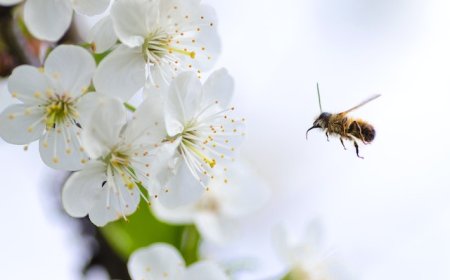Why are Japanese people prone to pollen allergies?
Pollen allergies, also known as hay fever or allergic rhinitis, affect a significant portion of the population worldwide. However, Japan stands out as a country where pollen allergies are particularly prevalent. This phenomenon has raised curiosity and sparked questions about why Japanese people seem to be more susceptible to pollen allergies.

In this blog post, Injavi will explore some factors that contribute to this trend and shed light on the reasons behind the high prevalence of pollen allergies in Japan.
1. Abundance of Pollen-Producing Trees
One primary reason for the high prevalence of pollen allergies in Japan is the abundance of pollen-producing trees, particularly cedar and cypress trees. After World War II, there was a massive reforestation effort in Japan, leading to the planting of vast areas of these trees. As a result, pollen from cedar and cypress trees has become widespread, causing allergic reactions in susceptible individuals during the spring season when these trees release their pollen.
2. Genetic Predisposition
Genetic factors play a significant role in determining an individual's susceptibility to allergies, including pollen allergies. Japanese people have been found to have a higher prevalence of specific genetic markers associated with an increased risk of developing allergic reactions. Studies have shown that certain genetic variations related to immune system responses are more common in the Japanese population, which could explain their higher susceptibility to pollen allergies.
3. Urbanization and Environmental Factors
Urbanization has also contributed to the prevalence of pollen allergies in Japan. As cities expand and green spaces diminish, there is a higher concentration of pollen in urban areas. Additionally, environmental factors such as air pollution and changes in temperature and rainfall patterns can impact the release and dispersion of pollen, exacerbating allergic reactions. These factors, combined with the dense population and limited green spaces in urbanized areas, contribute to the higher incidence of pollen allergies among Japanese city dwellers.
4. Hygiene Hypothesis
The hygiene hypothesis suggests that reduced exposure to certain microorganisms during childhood can lead to an overactive immune response, increasing the risk of developing allergies. In Japan, where cleanliness and hygiene are highly valued, there may be a lower exposure to environmental microbes and pathogens, potentially contributing to an increased prevalence of allergies, including pollen allergies. This hypothesis offers a possible explanation for the higher incidence of allergies in developed countries with high hygiene standards.
5. Lifestyle and Cultural Factors
Japanese cultural practices and lifestyle choices may also influence the prevalence of pollen allergies. For instance, the widespread use of face masks during pollen season helps reduce exposure to pollen particles, preventing allergic reactions to some extent. However, reliance on air conditioning and spending more time indoors during allergy seasons can limit exposure to fresh air and exacerbate indoor allergens, contributing to respiratory issues and allergies.
The high prevalence of pollen allergies among Japanese people can be attributed to a combination of factors, including the abundance of pollen-producing trees, genetic predisposition, urbanization, environmental factors, the hygiene hypothesis, and lifestyle choices.
While pollen allergies are a significant health concern, it's important to note that Japan has a well-established healthcare system and offers various treatments and preventive measures to manage allergies effectively.
Related Products









































































































